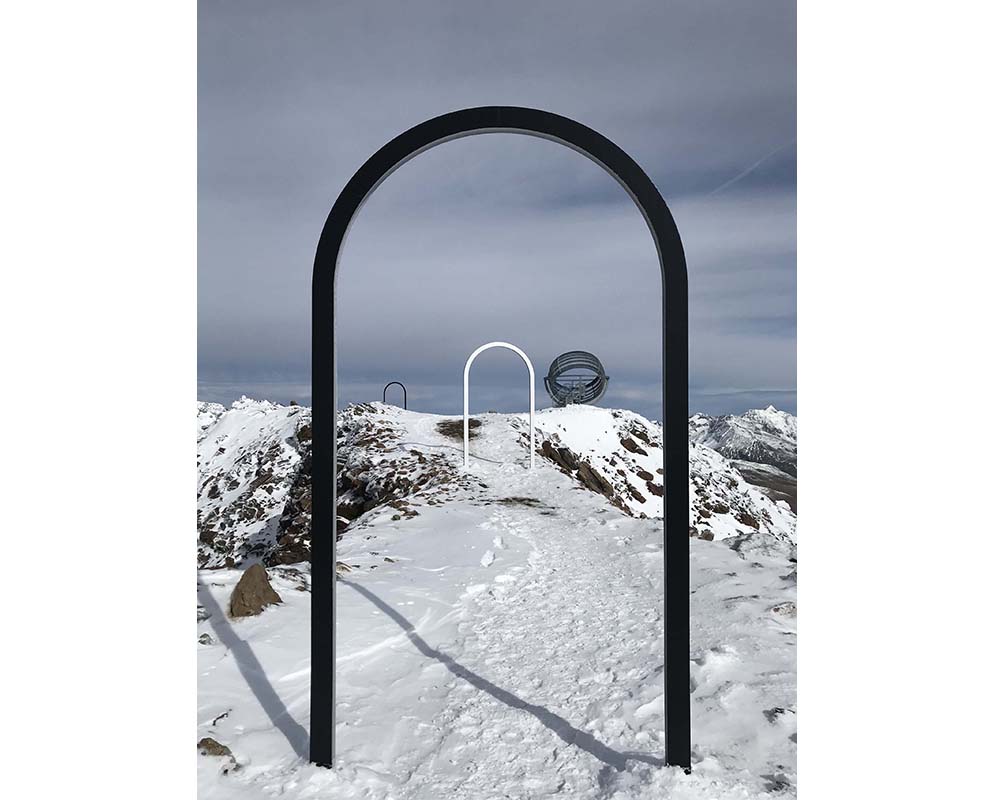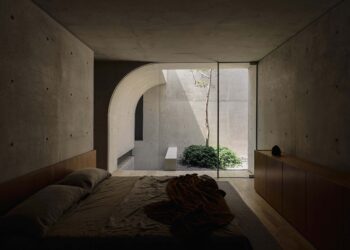Tangible climate change severity on the glacier summit

At the foot of Mount Grawand in South Tyrol, Italy, a 410-meter-long path stretches across the snow-covered summit of the Alpine Hochjochferner Glacier. Along this path stand nine arches, leading to the celestial observation device ‘Our Glacial Perspectives’ at the end. Encircling the viewing deck are rings assembled from steel and blue-tinted glass panels. Standing at the center, viewers can align their gaze with the arches to trace the path of the sun’s movement for that day, observe the horizon line as it traverses the sky, and determine the cardinal directions of north, south, east, and west.
Within a ring set in the vastness of nature, the observer’s gaze is focused on the movement of the sun across the sky. Of the nine arches, five white ones represent the ice ages of the Earth in the past, and four black ones represent the warmer interglacial periods that existed between the ice ages. The spacing between the arches is calculated relative to the actual duration of the ice ages, and together they form the time axis of Earth and glaciers. The rings follow the path the sun travels in the sky during the day. So the top ring shows the path at the summer solstice, the middle rings show the autumn and spring equinoxes, and the bottom rings show the path at the winter solstice.



The rings are divided Into blue-tinted glass panels, each sized to represent the distance the sun travels in 15 minutes. By referencing these panels, viewers can estimate the time of day based on the sun’s position. The blue glass is inspired by the cyanometer, a device invented in the late 18th century to measure the blueness of the sky. Here, the encircling bands of glass filter and reflect light and solar radiation. Two steel semi-circles supporting the viewing deck indicate the cardinal directions, while horizontal steel rings align with the horizon.
In the last two years, 10% of the Alpine glaciers have melted. The pace continues to accelerate, and the predicted future for humanity is not at all optimistic. Standing on a glacier-sculpted ridge, in a realm of nature without boundaries, and following the movements of celestial bodies is an extension of the experience of feeling the climate challenges the planet is already facing. The severity is effectively conveyed by the threatened glaciers at the forefront of that change.

Project: Our glacial perspectives / Location: Mount Grawand, in South Tyrol, Italy / Architect: Studio Olafur Eliasson / Materials: Steel, coloured glass (shades of blue), paint (black, white) / Completion: 2020 / Photograph: Courtesy of the architect; ©Oskar Da Riz (courtesy of the architect); ©David Orru (courtesy of the architect)




































